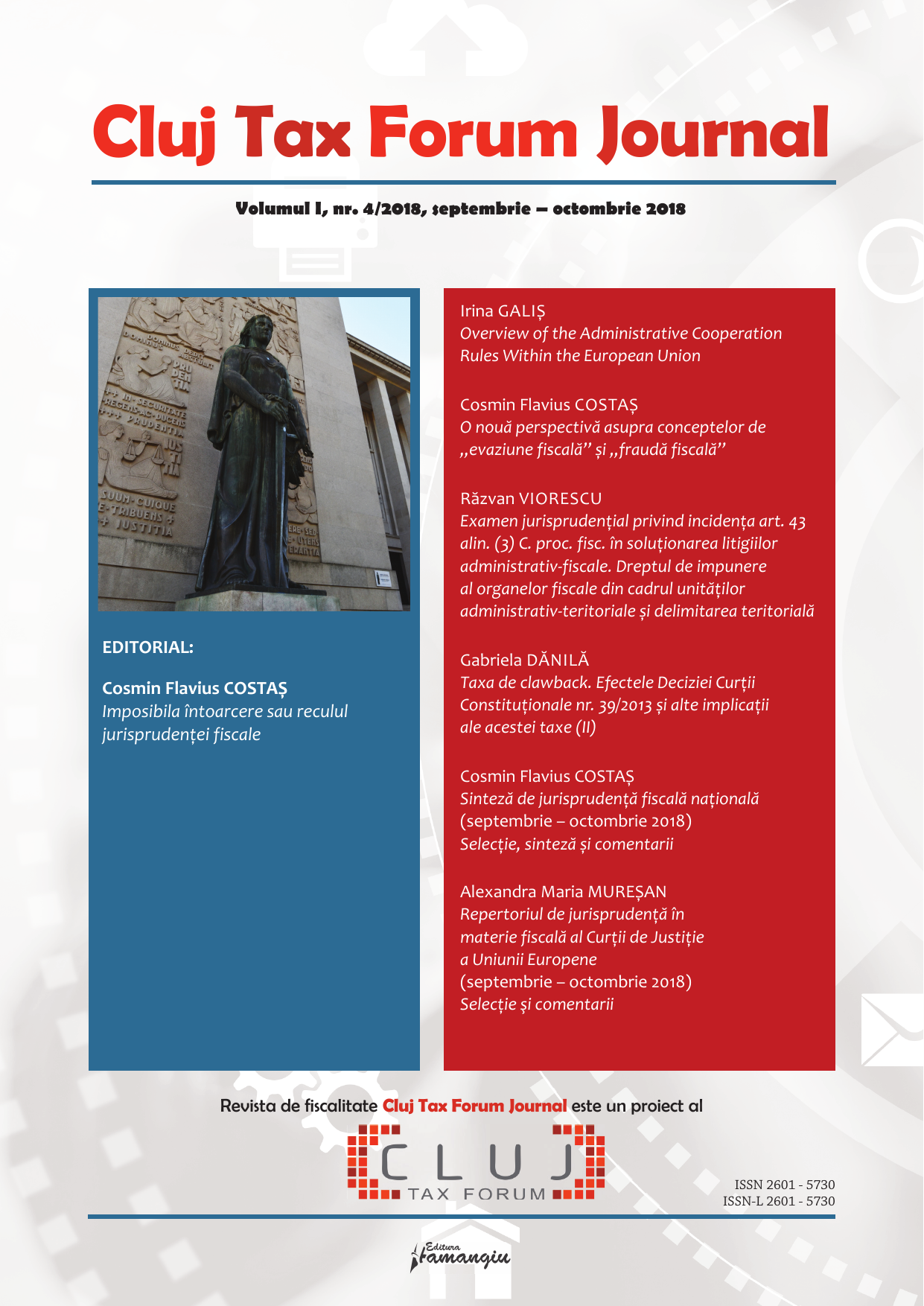Examen jurisprudențial privind incidența art. 43 alin. (3) C. proc. fisc. în soluționarea litigiilor administrativ-fiscale. Dreptul de impunere al organelor fiscale din cadrul unităților administrativ-teritoriale și delimitarea teritorială
Case-law analysis regarding the role of art. 43 par. (3) Tax Procedure Code in solving the administrative tax cases. The right to tax of tax authorities from the local communities and the territorial borders
Author(s): Razvan ViorescuSubject(s): Court case
Published by: Editura Hamangiu S.R.L.
Keywords: jurisprudential aspects; Tax Procedure Code; tax authorities;
Summary/Abstract: The present study focuses objectively on the main recent jurisprudential aspects (starting from the courts of justice within the area of the Court of Appeal of Suceava), on the manifestation of the competence conflict on tax matters between two administrative bodies regarding the same tax matters regulated by art. 43 parag. (3) of the Code of Fiscal Procedure – Act no. 207/2015. The zoning by-law of the two administrative bodies (i.e. the court decision that clarifies the misunderstandings between the neighbours regarding the settlement of the line boundary) that the administrative body refers to as being the legal document based on which the taxpayer would pay in the form of tax is not to be used as a proof in itself for the legitimacy of this change in the present – day legislation – Act no. 2/1968. From this point of view, the study focuses on criticizing the divergent interpretation of the court that is in disagreement with the jurisprudence of the Constitutional Court. This means that, as a result of the effective date of art. 11 parag. (81 ) of Act no. 7/1996, the mandatory use of the recognized limit boundaries is based on the delineation document with all its adjacent consequences, including the ”fiscal” ones. Thus, the study is meant to support the Romanian specialists both by presenting the legislative/jurisprudential references and providing examples of the legal reasoning used to sustain the demonstration in the litigation for which the taxpayers challenged the fiscal and administrative decisions to impose documents released by the ”new competent fiscal authority”.
Journal: Cluj Tax Forum
- Issue Year: I/2018
- Issue No: 4
- Page Range: 34-54
- Page Count: 21
- Language: Romanian
- Content File-PDF

